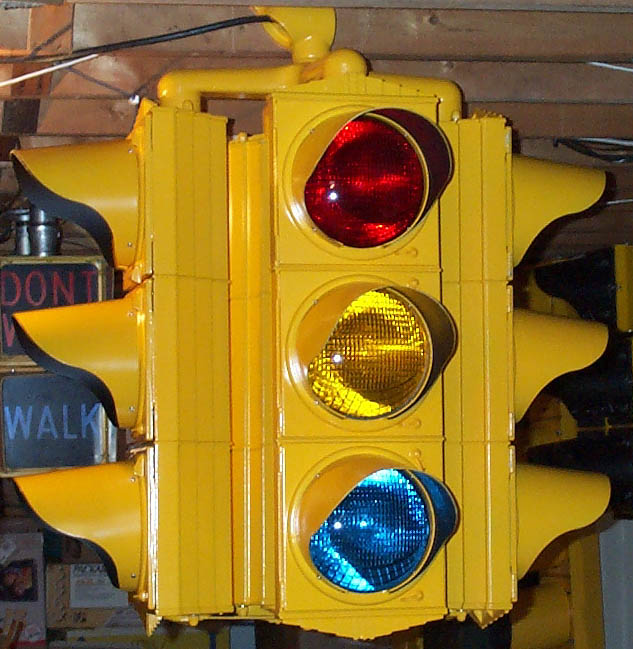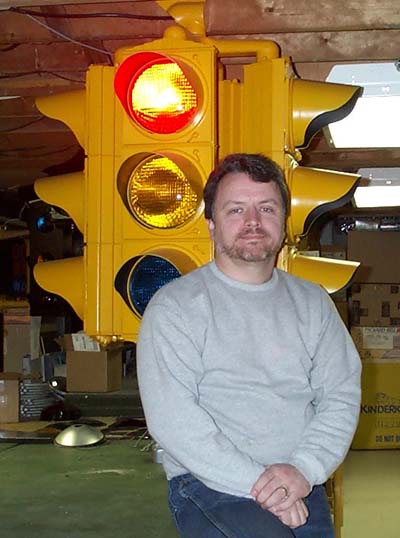Crouse Hinds Art Deco Four Way Cluster
Here is one of the biggest projects I have taken on and what is my second heaviest signal!

This baby weighs in at 120 pounds!
Most people that know me know that I normally like to stick to a rule of mine for my collection which is No Duplicates! I wanted to build a 4 way cluster out of some kind of signal which meant I would have to bend the rule, and Art Decos are extremely nice looking signals so I decided to make it out of Art Decos. I heard a rumor from a fellow collector that Scott Signal had just received a bunch of signals and a few of them were Art Decos, so I purchased three from him and the fourth came from a score on Ebay.
Here is a picture of the signals when I first brought them home. The three yellow ones came from Scott Signal. Scott Signal informed me that those signals came from Omaha, Nebraska. The green one came from an Ebay seller in California. You may look at that picture and say..."Wait a minute, there are five signals there!" The fifth signal came from Scott Signal for parts in case of broken parts on any of the other signals. Also pictured is the 4 way hanger hardware needed to make the cluster. The 4 way hardware still had pieces of other polycarbonate signals attached from when it was in service. It is a shame that some signals get trashed like that when they come out of service. There are so many collectors that would love to give used signals a second life as part of their collection!
The next task was taking the signals apart without breaking anything, especially without breaking off any screws.
If you look closely at some of the visors, doors and body sections, you will notice black burn marks in the paint. I had to apply heat with a torch to just about every screw on these signals or they all would have busted off.
After taking everything apart, I sandblasted all the paint off, then primed and painted everything. I used ACE hardware brand School Bus Yellow paint. That paint is a perfect match in my opinion to the yellow that is used on signals in the street, but it is also one of the messiest paints to use. There is a special nozzle on the cans which applies the paint like a painters gun instead of just a round spot like most spray paint cans. This nozzle makes it easier to paint without runs, but it also makes the paint a very fine mist so that it floats around in the air and gets all over the person doing the painting as well as the floor of the area that the painting is being done in. All in all, the mess is worth the final result!
Now for the fun part...putting them back together!
I start by assembling the bodies and end plates.
Next, add the reflector frame hardware that holds the reflector and frame in place.
Now I put the reflectors back in the frames. When they were originally manufactured, cork was used to keep the glass reflector from contacting the metal frame and prevent breakage. I replace the rotten cork with shoe laces.
Finally, I get the doors ready to be assembled to the bodies. The lever latches, visors, and lenses are re-installed.
After the reflector frames and doors are assembled, they can be installed on the signal body.
Four signals ready to be attached to the four way mounting hardware.
The easiest way to wire a set up like this is to wire the four way hardware before attaching the signals.
Attach each head one at a time.
I had to take one picture of the signals with all of the lights on before hooking it up to my NEMA controller
Here's a picture of myself with this signal.

This page was originally posted on 8/4/2002.